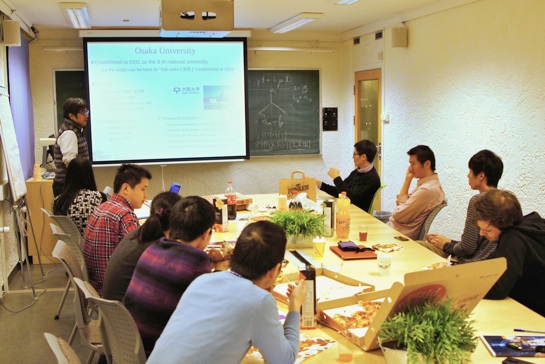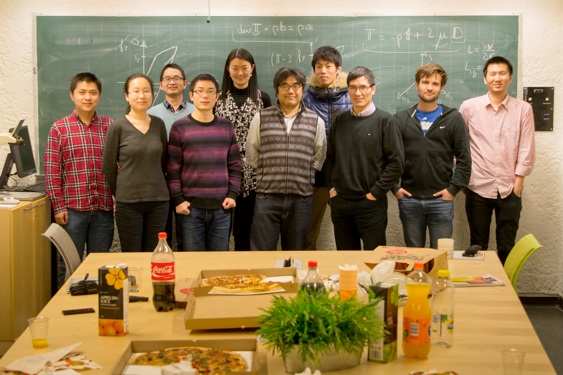This is a brief report of my short visit to Norwegian University of Science and Technology (NTNU) to meet Prof. Zhiliang Zhang and his colleagues, started from 1st of Feb. 2014 to 6th. The university is the largest university of science and technology in Norway, and they are proud of that fact that 80% of engineers in Norway are educated in the university. The author had stayed as a research fellow in this research group NTNU Nanomechanical Lab for three years from 2009 to 2012, and familiar with the city of Trondheim, Norway. Visiting this university is a great pleasure of the author.
At Monday, we meet Prof. Zhiliang, Prof. He, and Dr. Wu. Also many new PhD or master course students who the author didn't know. Recently the research group have received a new research project funding, and hence they opened several new PhD candidate positions. Their research subjects are based on mechanics in nanoscalce, extending and combining the orthodox mechanics with atomic and molecular scale science. Their new research projects diverse mainly to fields: nanomechanical electronic packaging, and enhanced oil recovery using nanoscience. Also, coatings and fractures of materials are continuous targets requested for the industries.
Visiting Norwegian University of Science
and Technology (NTNU)
Shijo Nagao
The primary aim of this visit was to confirm our cooperation based on the JST Core2Core program, and to exchange recent research news between the two groups. In addition, the author would introduce my student Mr. Matsuo Takuro, who was staying in the group for four weeks, to the members of NTNU Nanomechanical Lab. Therefore, the visit started with a half day introduction to the Trondheim city at the Sunday (Feb. 1st). The weather of the city was very strange because there was no snow in the city at all, and it was record-breaking warm winter, as a middle land of Norway. Considering the sever snow in Japan during the travel, the global warming is really changing the weather all around the world.
We discussed about the recent developments in NTNU Nanomechanical group. Laboratory equipments have been changed; the Hysitron nanoindenter is improved to have true four points eletrci resisitivity measurements, and new scanning microscopy with nanoindenter has been settled in the group. In the theoretical field, on of tresearch presented their great progress on the molecular dynamics simulations on the mechanical characterization of methane-hydrate, which is one of the new natural resource of energy also available in the sea around Japan.

The short travel recalls the author that the world is rapidly changing, as well as the research field. All the researchers must keep their eyes open to find out what is going on in the world. The author strongly believes this Core-to-Core plays an important role to enlighten many young researchers in the program.
At the last afternoon of my stay, the author give a talk about the recent research progress in Osaka university. This leads to a deep discussion meeting with some pizza & juice (see figures bellow). You may recognize that many of the researchers comes from Asia, particularly from China. One reason is that the professors in the group are Chinese, but I would emphasize that all Chinese students show aggressive will to study cutting-edge science and emerging engineering abroad. They are very much sure that who takes the future technologies governs the future world.
